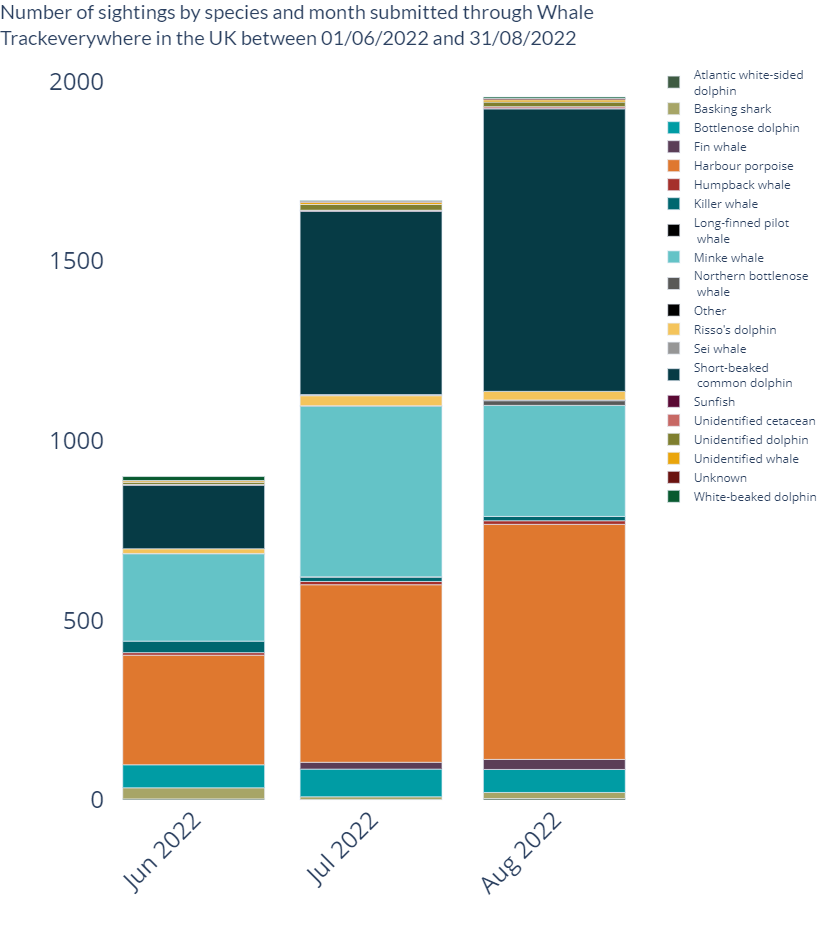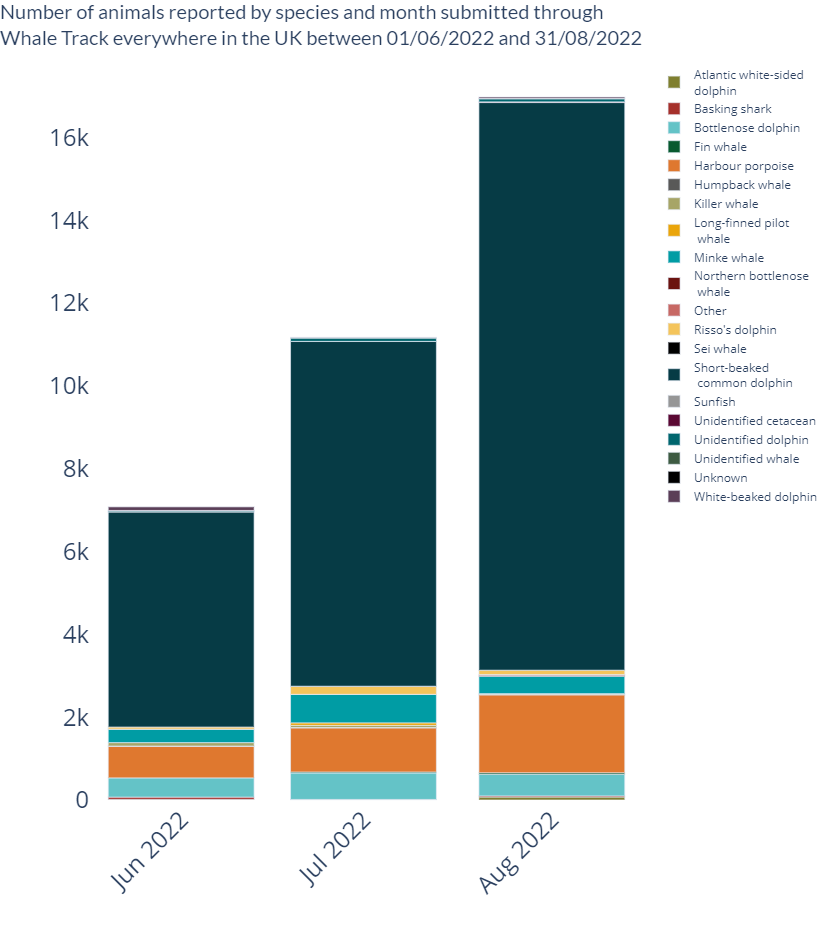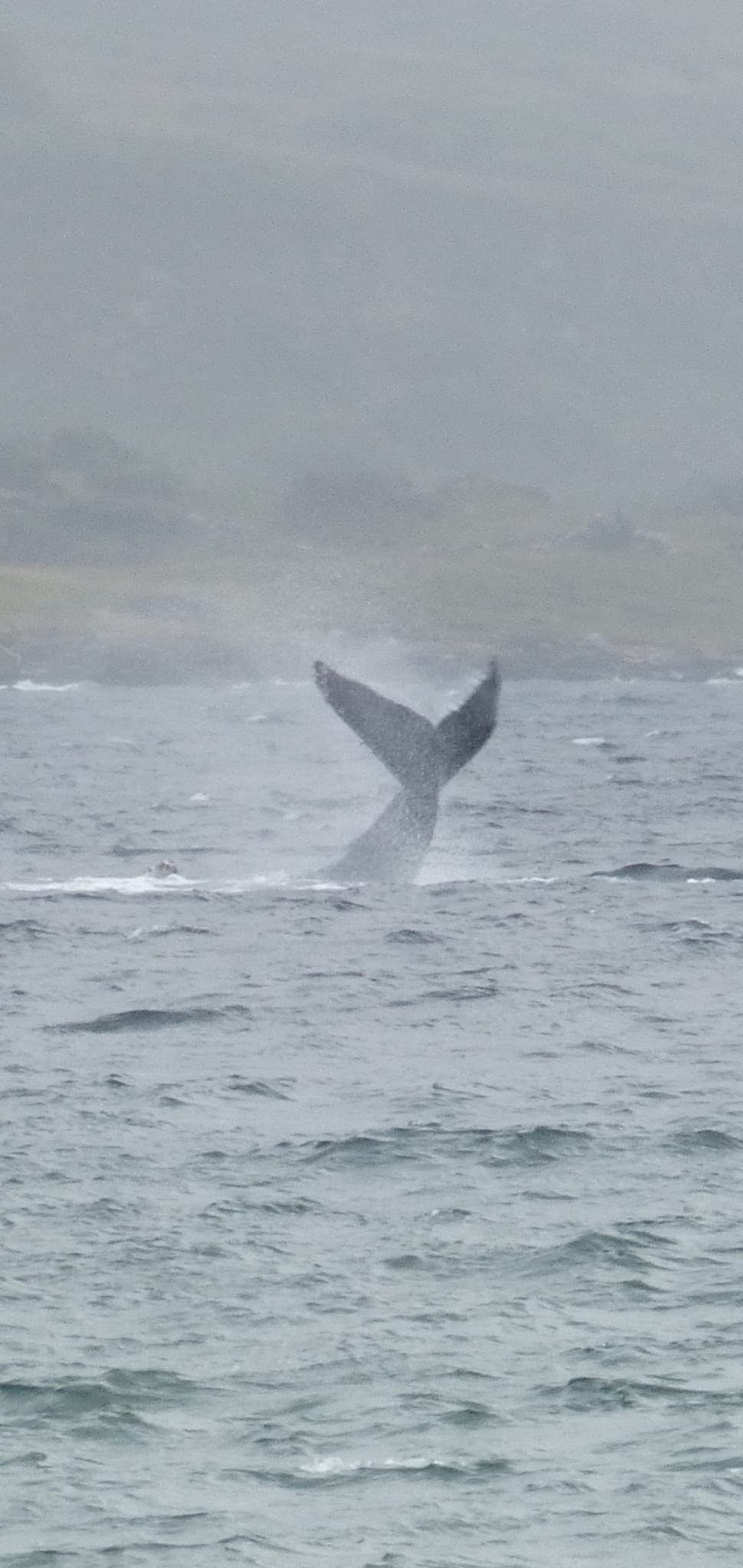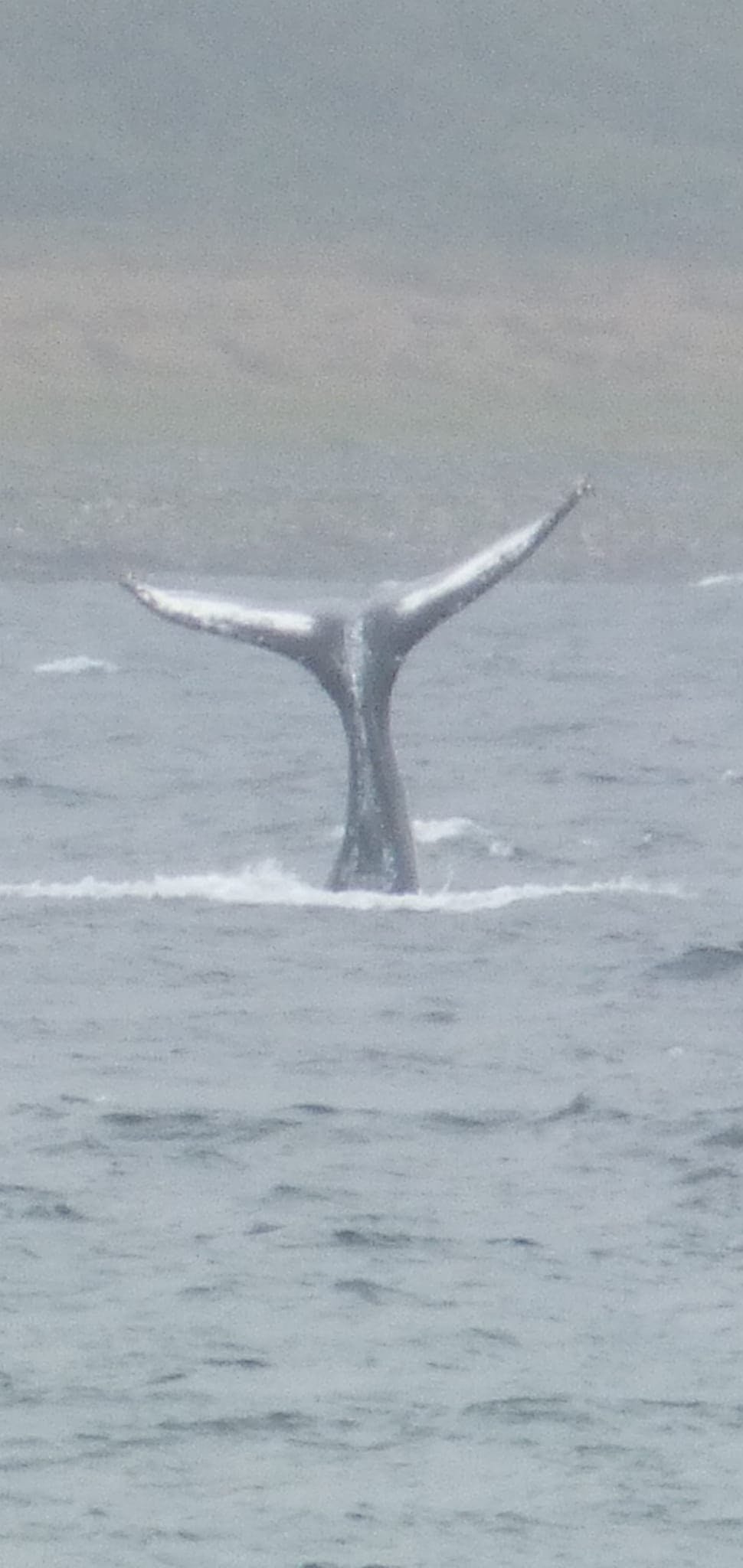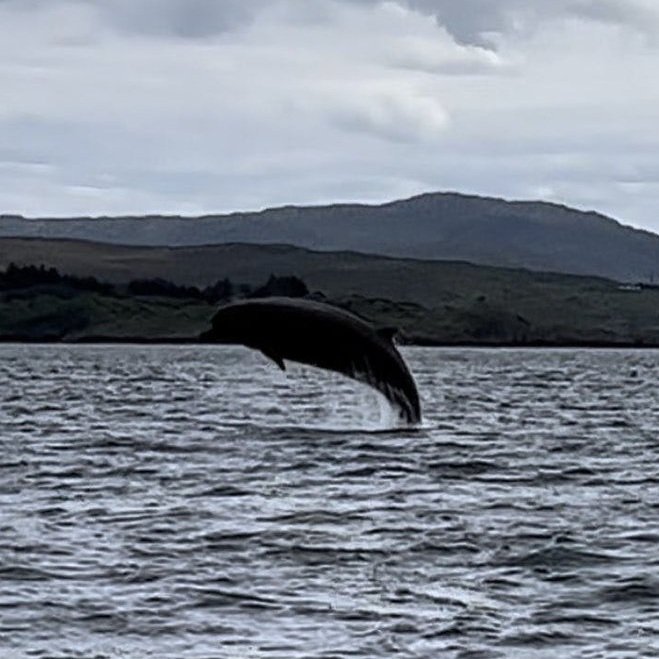A whaley good summer of sightings
What a summer it has been for whale sightings! In this blog we explore the whale encounters our fantastic Whale Track community have recorded. But first, let’s take a quick look at what’s been spotted and reported via our app, Whale Track.
Between the start of June and end of August this year, a wonderful 425 Whale Track users sent in a total of 4,530 sighting reports of 35,253* animals, from 15 species across Scotland. The usual suspects of common dolphin (1,473 sightings of 27,225 animals), harbour porpoise (1,458 sightings of 3,708 animals) and minke whale (1,028 sightings of 1,430 animals) made it to the podium as the top three most frequently sighted species.
*This data has not been analysed to account for possible duplicate records from multiple reports of the same animals.
This summer has seen an incredible number of reports of whales in Hebridean Seas, as well as the odd report from elsewhere in Scotland. In addition to minke whales, we’ve had reports of fin whales, humpback whales, northern bottlenose whales and even sei whales!
HUMPBACK WHALES
A total of 26 reports of humpback whale have been reported across Scotland, with 20 of these reports from off the west coast.
It was an exciting few days back in July when a humpback whale turned up in Loch Goil. Simon had a wonderful birthday surprise, seeing it swim past the boat near Ardentinny. While Sue Brooks captured these fab photos of the humpback’s tail fluke as it dived below the waves off the west side of the Isle of Bute. The identity of this individual is still a mystery.
Humpback whale © Sue Brooks
Humpback whale flukes (tail) can measure up to five metres across and can be used to identify individuals - the colouration and serrated trailing edge is unique to each animal. During August, Hebridean Whale Cruises had an incredible encounter with not one, but two humpback whales off the coast of Lewis. They sent their photos to the Scottish Humpback ID catalogue and Lyndsay managed to positively ID them as ‘Lindola’ and a well-known humpback called ‘Pi’.
A humpback whale was also spotted off the coast of Portknockie in June, encouraging locals in the area, including our Education Officer, Sadie, who was home visiting family at the time, to chance her luck to see it. Humpback whales are on the top of Sadie’s ‘to see’ list, but unfortunately she was too late and they remain a priority to spot.
FIN AND SEI WHALES
Fin whales have been reported almost 50 times this summer, with the majority being seen off the coast of Lewis.
Fin whales are widely distributed throughout all major oceans but seem to favour coastal and shelf waters between temperate and polar regions. Little is known about their movements and migration, though it is thought that some seasonal migration does take place.
Sei whales are rarely seen in coastal waters off the west coast being predominantly an offshore species. This summer we have received 3 reports of sei whales sighted in Hebridean seas.
To the west of the Hebrides is the Rockhall Trough, a ‘migration highway’ for baleen whales and deep diving whales. The west coast of Scotland has a long and diverse coastline with mixing oceanic and coastal currents creating an area of high productivity for fish and plankton, so it stands to reason why we may occasionally get the more unusual species frequenting our waters.
NORTHERN BOTTLENOSE WHALES
First reported through Whale Track on 01 August, two northern bottlenose whales were seen around the Isle of Raasay. Awing onlookers as they displayed some breaching behaviour, the pair were observed for several weeks. Towards the end of August, reports started coming in of a pair of northern bottlenose whales being seen around Lochinver. It is still unclear if these were the same individuals seen around Skye, as reports appear to overlap, more data analysis will hopefully shed some light on this.
Northern bottlenose whales are deep-water specialists found in the North Atlantic Ocean. They occur in small numbers off our northern and western shores, and off the west coast of Ireland. Their oceanic lifestyle has led to a gap in our knowledge about the general ecology of beaked whales, with many aspects of their lives remaining a mystery. However, we do see an inshore migration of a few individuals in the Autumn months.
© Anna Foster and © Campbell Fletcher
MINKE WHALES
Minke whales are the most regularly seen species of whale in Scotland. This summer we received over 1,000 reports of minke whales, including the much-anticipated reports of Kasey and Knobble returning to Hebridean waters.
Knobble #FD27
Knobble was first recorded in 2002 and is one of the most recognisable minke whales seen in the Hebrides. Usually spotted in the waters around Mull, during July and August, Knobble was recorded for the first time this year by Andy Tait on board Sealife Mull on 13 August.
Knobble was last seen in August 2021 and 2022 marks the 17th consecutive year Knobble has been seen in Hebridean Seas.
“Past Ardnamurchan we came across one of our long returning minkes ‘Kasey’ along with quite a few others, including one which circled and swam underneath the the boat leaving a faecal plume before leaving us.”
Kasey #FD26
Kasey appeared almost a month earlier than Knobble, being spotted by Andy on the 19 July and multiple times since then. On 23 July, Andy spotted Kasey just past Ardnamurchan lighthouse, sharing this on social media.
KILLER WHALES
Although we’re focusing on whales, we couldn’t write this summary without including the largest species of dolphin - many peoples favourite, the killer whale. This summer we’ve had 54 reports of killer whales across the Hebrides and 2 elsewhere in Scotland.
Since our last report in May of John Coe and Aquarius, they have been reported another 29 times on 17 different days on Whale Track and through social media channels. Being seen around Coll and Tiree, Mull, Mallaig, Cork in Ireland, the Small Isles and Skye in that time.
Keep your eyes open for our next report of John Coe and Aquarius’s movement of 2022 at the end of the year.

